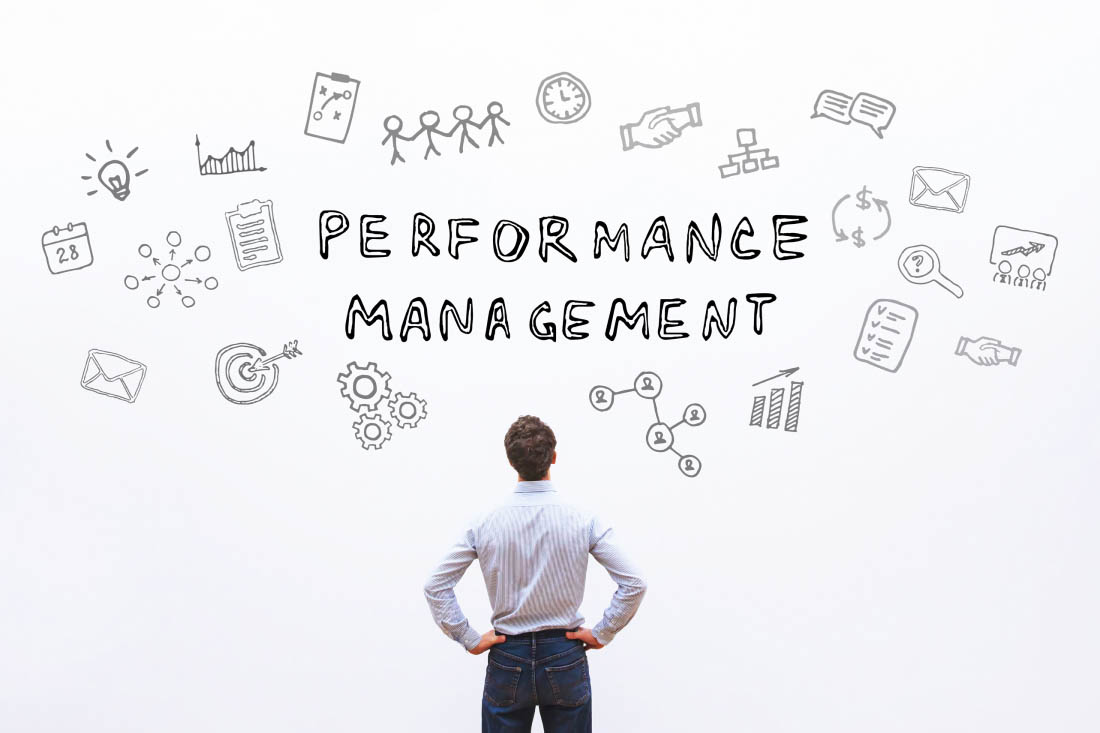Effective workforce performance management is a key element of competitive businesses today. Organizations that implement meaningful workforce performance management see benefits across the organization, from improved employee engagement to higher retention rates and the ability to outperform competitors.
In this post, we’ll discuss the benefits of workforce performance management and seven steps for implementing an effective system in your organization.
Key takeaways:
- Workforce performance management is a process that aligns individual performance to organizational goals to improve overall effectiveness.
- Organizations that implement effective workforce performance management see many benefits, such as productivity improvements, better goal alignment and stronger business outcomes.
- There are seven essential steps for ongoing workforce performance management.
What is workforce performance management?
Workforce performance management is a process that seeks to improve organizational effectiveness by aligning individual performance to the overarching goals of a business. It’s a systematic approach for measuring how well employees perform and assessing how motivation and engagement enhance productivity.
Organizations that apply for workforce performance management best practices see significant improvements in overall performance metrics. According to a study by Willis Tower Watson, companies with strong performance management processes outperform their competitors financially by 150%.
Benefits of investing in workforce performance management
Workforce performance management benefits companies in many ways when it’s implemented effectively. It empowers and motivates employees, too. The right approach:
- Improves productivity: Understanding how, when and where employees are most productive empowers leaders and managers to remove barriers to productivity and increase flow and quality of work for employees.
- Enhances goal-setting: With clear benchmarks for what the company is capable of achieving and how employees get there, teams more effectively set reachable, measurable goals.
- Boosts motivation and job satisfaction: Employees with achievable goals and clear rewards for hitting them tend to be more motivated and enjoy their jobs more.
- Increases retention rates: Employees are less likely to seek out other jobs when they’re motivated to do their best.
- Informs better pay and salary decisions: Effective performance management programs lead to salary and compensation that’s more accurately tied to performance, increasing a sense of fairness in the workplace and encouraging employees to perform their best.
- Enhances recognition and rewards: Workforce performance management supports recognizing and rewarding employees when they deliver good results or effort.
- Improves employee well-being and work-life balance: Performance management helps managers identify ways to support employees so they can work smarter, not harder. In turn, this improves employee well-being and work-life balance by empowering people to do more work in less time so they don’t have to work after hours.
- Informs effective training programs: Conducting workforce performance management shows managers where performance is lacking, which presents opportunities for upskilling, training or development. It also reveals which employees are ready to move to the next level at their workplace.
7 steps for conducting workforce performance management
Every organization’s workforce is different, but here are seven general steps any leader should take to understand, manage and improve their workforce’s performance.
- Define key performance indicators (KPIs)
Clear expectations are the key to determining performance. Set measurable, consistent key performance indicators for every level of your organization, from individuals to teams to full departments. Get granular with these expectations to clarify the direction your organization is heading and inform specific tactics on achieving goals.
- Check for role alignment
For employees to perform at their best, their skills and strengths must match their responsibilities. They must also have a clear understanding of how their roles and specific work align with the overall goals of the organization. The process of role alignment ensures employees are in positions suited to their skills and strengths, and shows how their work contributes to the business’s success.
Human resources leaders must ensure all job descriptions and daily roles fit into the framework of the organization’s overall goals. At the same time, managers and supervisors must ensure the right team members are in roles where they can perform their best.
- Establish SMART goals for employees and OKRs for teams
All your organizational goals should be SMART — specific, measurable, achievable, relevant and time-bound. Create policies that empower managers and leaders to set SMART goals for employees across job functions to better track progress and outline action plans.
Similarly, teams need clear objectives and key results (OKRs) to understand what they need to do and how they plan to get there. Objectives are the goals, and key results are progress indicators toward the objectives. Examples of key results include outcomes, milestones and necessary events that indicate progress toward a long-term or big-picture objective.
- Track progress with performance management and coaching
Many companies rely on traditional employee performance surveys or annual reviews to track performance, but this doesn’t provide the whole picture of your workforce’s performance. ActivTrak helps leaders correlate work habits with productivity trends to determine where employees need support, and to measure performance objectively.
In addition, ActivTrak shows teams, managers and even individuals exactly how their work is performing against goals — and shows performance trends over time. Thousands of organizations use it to understand how engagement, productivity and focus impact performance. The holistics workforce insights make it easy to apply benchmarks, set goals and expectations, align roles and responsibilities and even create more effective training programs. Best of all, ActivTrak integrates with other business software to show de0eper insights across your workforce, including correlating surveys and sentiment analysis with productivity metrics.
- Discuss progress at regular check-ins
While providing individuals and teams access to their performance metrics is one way to improve performance, organizations must foster intentional communication about progress. Transparent discussions with the entire workforce around performance keep teams aligned with organizational goals. These check-ins also provide individuals with an opportunity to provide feedback on goals, objectives and workloads.
Managers and individual contributors should meet regularly to discuss performance. Leaders should also host company-wide communications, whether these are quarterly all-hands meetings, annual all-employee get-togethers or even email updates when organizational milestones are met.
- Offer coaching to reach objectives
A major component of an effective workforce performance management system is providing coaching to help employees reach their goals. As managers assess performance and meet with employees, it’s important to look for areas to provide support so employees can do their jobs better. For example, a manager who notices an employee struggles with a particular task should offer coaching to retrain the employee in that function. Additionally, offer guidance to help employees with time management, project prioritization and other areas where more support is needed. Coaching employees in these areas will help them become more proficient in their roles.
- Recognize great performance
Individuals, teams and departments deserve recognition when they hit performance goals. Providing regular, consistent rewards and recognition increases motivation, improves morale and increases job satisfaction.
The options for rewarding performance are virtually endless. Celebrating product launches or successful programs is an easy place to start. Managers should reward teams for hitting milestones or improving performance and productivity. Employees should also have a clear understanding of what goals they need to hit to get a promotion or raise.
Workforce performance management examples
Check out these examples to see a few ways organizations have successfully implemented workforce performance management and experienced benefits as a result.
Marrying performance and customer service data at SaaS company
One growing SaaS provider leveraged ActivTrak’s workforce performance management solution to optimize team performance so they could increase productivity without adding headcount or increasing the likelihood of burnout.
The company had great customer satisfaction scores as a result of fast response times and accurate fixes, but they wanted to maintain or improve these scores as they grew without increasing headcount or hurting employee well-being from extra stress. To do this, they recognized the need to marry customer service data with performance data.
The ActivTrak team created a custom performance dashboard with Microsoft Power BI that included data from Zendesk, Intercom and ActivTrak for a consolidated view of customer service and productivity data. By combining ticket volume data, response times and customer satisfaction (CSAT) ratings with key productivity data — such as hours worked, agent utilization levels and time spent on related support activities — the team gained detailed insights into how work got done, plus opportunities to better drive results across the team.
From there, the team simplified operations by defining performance metrics based on objective data to keep customer satisfaction levels high while improving processes. Managers accelerated performance reporting with a more complete view of input and output. The company also established a centralized place to measure and share performance data so everyone had the insights they needed for more productive one-on-one meetings and coaching sessions. As a result, the manager was able to plan, forecast and schedule employees to match workload. The enhanced visibility also helped the team identify and respond to inefficient processes.
Focusing on peer feedback and regular meetings at Microsoft
Microsoft recognized top-down performance management wasn’t giving them a full picture of their organization’s abilities. At the same time, leadership wanted to maximize employee engagement, increase morale and improve overall performance. They decided to update their approach to performance management and focus on peer feedback.
Their new system includes performance journals employees use to record work-related activities, events and upcoming projects — and to send feedback to colleagues. Microsoft also implemented an operational performance system that integrates with employee productivity tools and serves as a platform for targets, projects and performance discussions. Finally, the company opted to move from a single, formal annual review process to more frequent meetings between managers and employees to encourage ongoing feedback, personal development and strategic alignment. As a result of the updated approach to workforce performance management, Microsoft saw employee morale and performance improve.
Embracing transparency at Netflix
Netflix approaches workforce performance management as an underlying driver for everything they do. For example, they ensure leaders and managers “walk the walk” of their values and mission. They also promote employees who demonstrate their values and reward contributors who advance their mission. The company is radically transparent about goals and enforces modeling behaviors that align with its clearly defined culture.
Netflix also updated its performance management system by getting rid of annual reviews in favor of a 360-degree review process that emphasizes peer feedback at a more frequent, less formal cadence. The company empowers managers to create teams that work for their goals by asking them to consider which employees they’d fight for, and who fosters a sense of belonging.
Finally, Netflix encourages managers to create a culture that fosters creativity and autonomy instead of micromanagement. This inspires confidence and increases job satisfaction as well as motivation and creativity.
Streamline workforce performance with ActivTrak
Leverage ActivTrak’s performance management capabilitites to take your organization’s workforce performance management to the next level. Our comprehensive suite of analytics tools is designed to enhance productivity, engagement and well-being. Gain insight into how work gets done to make informed decisions that optimize outcomes and drive success. Contact our sales team today to get started and learn more about how ActivTrak can benefit your organization.





